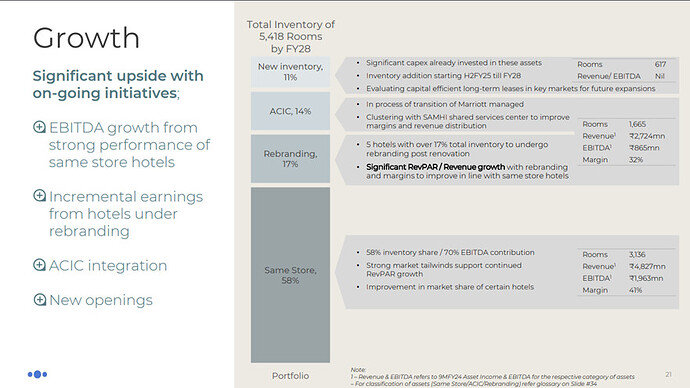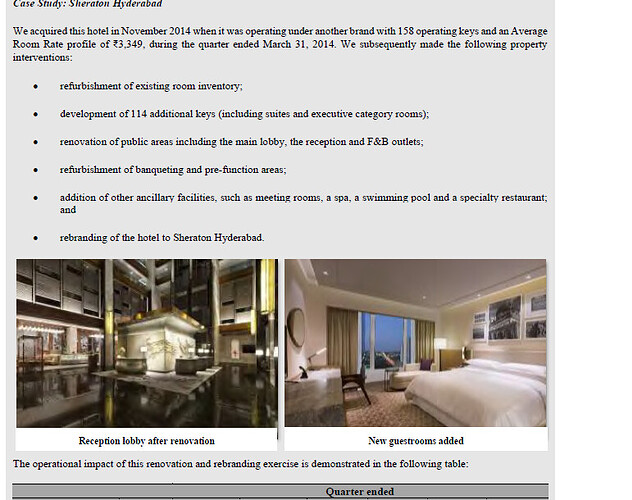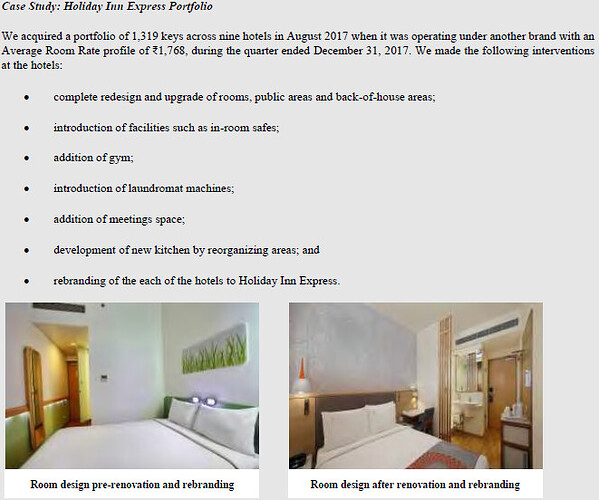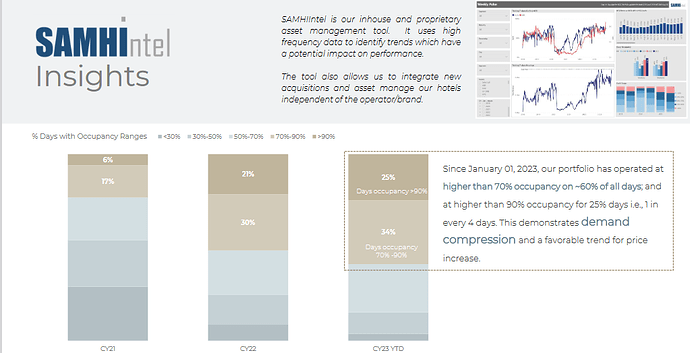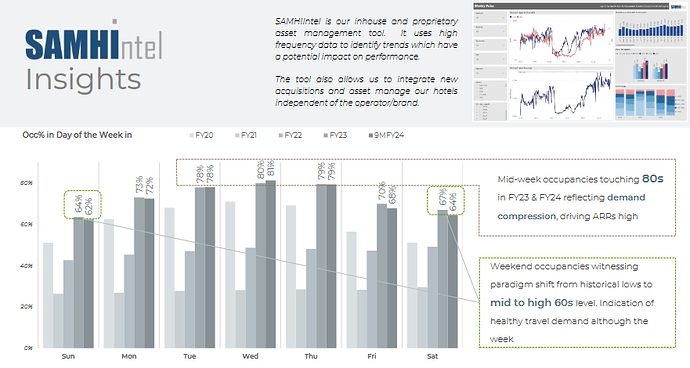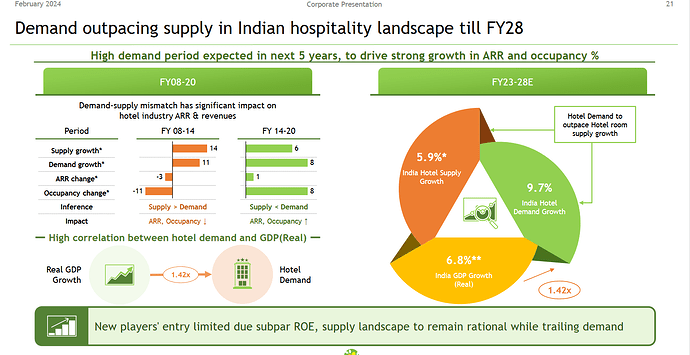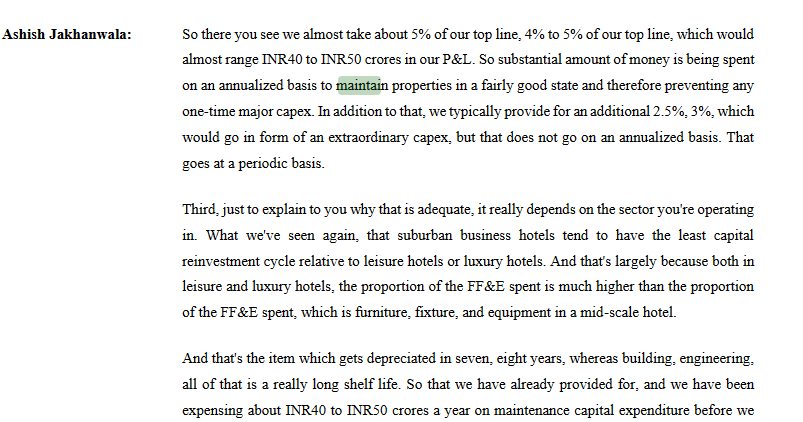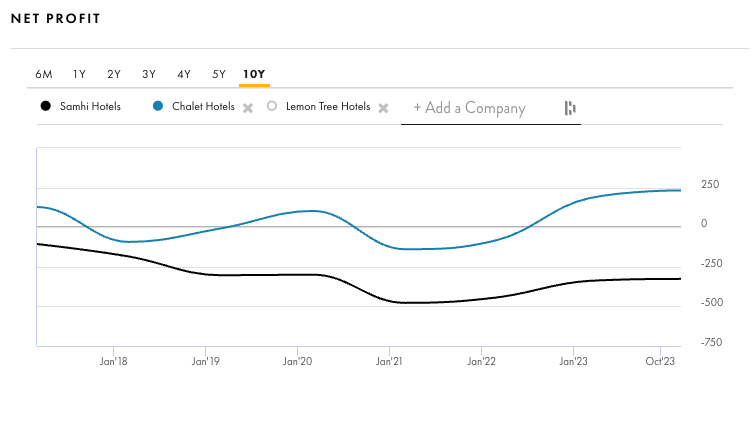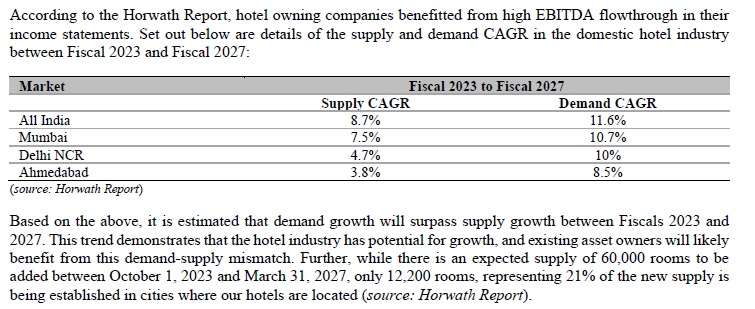-
4800+ Rooms across 31 Hotels
-
Owns the properties - Refurbishes, renovates and then lets out the hotel to big hotel brands to manage it
-
Samhi doesn’t manage or operate the hotels itself
-
Passes on the management fees and retains the F&B and rental incomes
-
75% is room rental; 25% from F&B
-
Hotels / Brands:
- Courtyard by Marriott
- Fairfield by Marriott
- Sheraton by Marriott
- Renaissance by Marriott
- IHG
- Hyatt Place
- Hyatt Regency
- Holiday Inn
-
Owned by Samhi and managed by Marriott / IHG / Hyatt (charges mgmt. fees to Samhi)
-
90% of their revenues come from Tier-1 cities
-
Hotel traffic tends to be higher in these cities
-
ARRs are higher in these cities
-
Good geographical diversification protecting it from unforeseen situations in a certain city / region
-
Focuses a lot on office space absorption, which is on the rise (lot of scope in cities like Bangalore, Mumbai, etc.)
-
Commercial activity has picked up and expected to stay robust going forward
-
Air passenger traffic remains strong, showing good travel demand
-
Demand is not a problem as per management
-
Creating supply takes time and that provides companies like Samhi with high pricing power – driving up the ARR, Occupancy and therefore, the RevPar
-
Good time to play the upcycle until the supply comes in and demand starts peaking in a few years
-
Three categories of hotels:
- Upper Upscale – ARR – 9300+ (43% of Revenues)
- Upper Midscale – ARR – 5700+ (42% of Revenues)
- Midscale – ARR – 3700+ (15% of Revenues)
-
Remains a debt heavy company, but most of the IPO proceeds have been used to pay off the debt (900Cr used for debt reduction) – finance cost has fallen
-
Management expects the growth in profitability to aid in debt reduction going forward
-
RevPAR is on the rise, growing at 20% YoY in the recent quarter
-
EBITDA margins at 32%
-
ACIC Hotel Chain acquired. Being managed by Samhi as of now, will be passed on to Marriot to manage by Q1 or Q2 FY25
-
962 rooms in ACIC Portfolio; 22% of the revenues as of now
-
As all these rooms become operational and occupied, EBITDA margins are expected to touch 40%+ (8-10% improvement)
-
Being a primarily business hotel model, occupancy on weekdays is better for Samhi compared to weekends (78-80% on Tue, Wed and Thu; 64-67% for Sat-Sun)
-
Weekend occupancy is also expected to improve in FY25-FY26 as per mgmt.
-
Not acquiring too many new hotels; major focus is on increasing revenues from existing hotels through renovation and refurbishment
-
Made provision for lease cancellation issue of around 7Cr
-
Finance cost has come down from 132Cr to 65Cr; expected to come down further as they deleverage
-
Samhi is pursuing a long term lease arrangement (which will be tied to revenues)
-
Will become a completely asset light model - reducing depreciation and help margins further
-
Expecting strong H2 performance in FY25 with new inventory boosts
-
Looking to turning profitable by Q1FY25
Risks:
- Extremely cyclical sector
- Company has a lot of debt
- Yet to turn profitable
Disc: Invested

